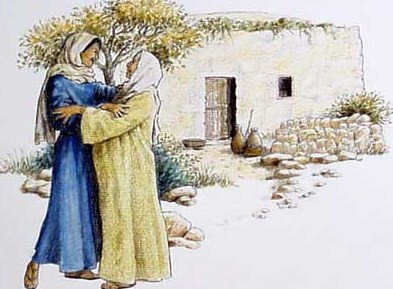
“Among the distinctive characteristics of Francis’s appreciation
of the mystery of the Visitation are its integration, balance,
and equilibrium-also hallmarks of his personality and thought
as a whole. This balance is achieved by Francis’s harmonizing,
here as throughout his writings, the vita contemplativa with
the vita activa, or the “inner” and “outer” man, reflective as
well of the ideal of the honnete homme: one is to maintain a
contemplative core-devotion, holiness, union with God-in
the midst of the busyness of one’s state of life in the world. This
characteristic of Francis’s understanding of the Visitation has
often been noted by Salesian scholars, but perhaps none as elegantly
as Elisabeth Stopp:
Mary went with haste into the hill country to visit her cousin who needed
her, not so much for practical help, but for moral support and for a
strengthening of her faith in the situation in which she found herself. But
Mary went there carrying Jesus hidden within her, and she took His sanctifying
presence to Elizabeth and to her child. The Visitation was therefore
a mystery of worship and adoration, expressed in the insight of
Elizabeth’s cry of faith, and then immediately offered back to God in the
exultation and thanksgiving of the Magnificat. The time these two women
spent together was one of prayer in the living presence of the God Incarnate,as well as a time of hidden, mutually rendered service. “
Source:
Mother of Our Savior and Cooperator in Our Salvation: Imitatio Mariae and
the Biblical Mystery of the Visitation in St. Francis De Sales
Joseph F. Chorpenning
Madame de Chantal: Portrait of a Saint (London: Faber and Faber/Westminster,MD: Newman Press, 1962), 125